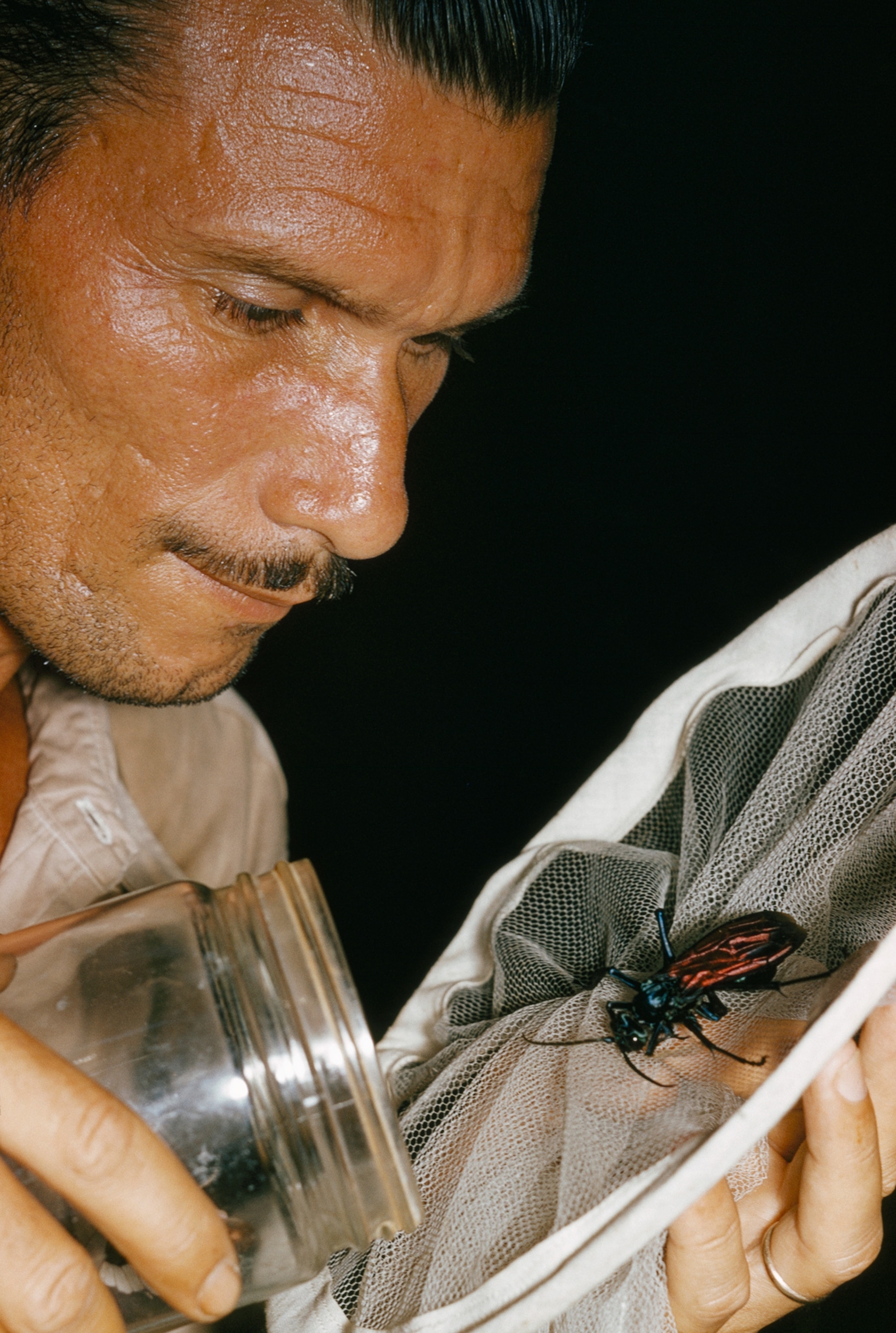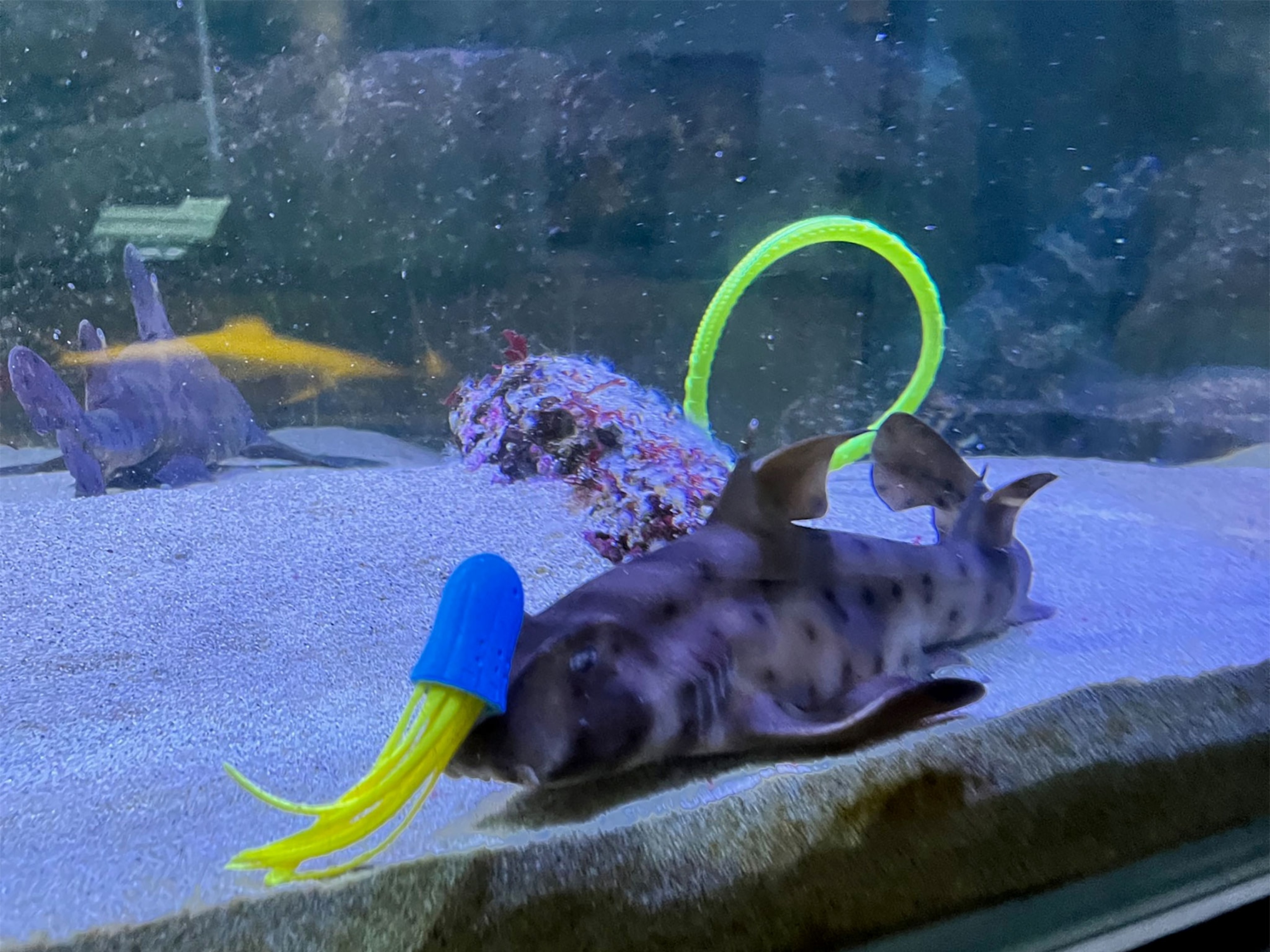
The Worst Places to be Stung? Ask This Guy
Famous for inventing the Schmidt Pain Index, entomologist Justin Schmidt’s new book reveals the history of insects’ most feared defense.
We know there’s not supposed to be any math in summer, but this word problem is unavoidable: outdoor activity + exposed skin = higher risk of insect stings.
Peeking from behind our bug net, Weird Animal Question of the Week takes the author’s prerogative to wonder, why do insects sting us in the first place?
Take the Hint
Stings are insects’ defense when they feel threatened, says biologist Justin Schmidt—and he ought to know. In his new book The Sting of the Wild, he puts the thousand or so stings he’s endured while collecting and studying insects to good use. Not only does he explain his Schmidt Sting Pain Index, wherein he rates the pain of numerous stings on a scale of one to four, but he also relates the fascinating natural histories of these animals.
Mud dauber wasps, for example, rate a lowly one on the scale, like “jalapeno cheese when you were expecting Havarti,” Schmidt says, while the chapter on the warrior wasp, a 4, opens with the word “Torture.” (For more nasty stingers, see Ask Your Weird Animal Questions, Insect Edition: Wings and Stings)
Insects typically try to avoid stinging, an act which could cost them “a leg or an antenna or a chunk of wing,” if the target fights back, Schmidt says. This is why they try to clue us in with warning colors, like the bright red velvet ant’s (which is actually a wasp) or loud, buzzing wing beats, like the noisy cicada killer wasp’s.
Male insects don’t have stingers, but they’’ll fake it, “curling their abdomen around and jamming it into you,” causing you to drop them so they live another day, Schmidt says.

Why Do Only Females Sting?
Stingers evolved from ovipositors, the tubes through which eggs are laid, which are, of course, found only in females. Stinger and ovipositors are now separate in all insects except parasitic wasps, which often inject their eggs into a host with just a splash of paralyzing venom. (An immobile host is easier for babies to eat.)
Tarantula hawk wasps have major stings because they take tarantulas on which they lay their eggs which will hatch out and eat the hairy host. Rating the wasps a four on the sting-pain scale, Schmidt advises that if you’re stung, “lie down and scream,” as you’re likely to hurt yourself even more while stumbling around in an out-of-control state of total agony.
Why Don’t All Insects Sting?
Stingless insects, like butterflies and moths, lay their eggs on top of plants’ surfaces rather than injecting them. They “don't need an ovipositor, thus they haven't evolved stingers,” says Katy Prudic, an entomologist at the University of Arizona.
She does warn that some caterpillars pack a punch.
“Don’t touch a caterpillar that looks like Donald Trump’s hair," she says. “It will sting you.” Called the puss moth caterpillar, this species has hollow spines through which it secretes venom and is one of the most venomous caterpillars in the U.S.

How Not to Get Stung
Giving stinging insects a wide berth is the best way to avoid getting zapped, Schmidt says, but there’s an additional trick for avoiding bee stings: Hold your breath. (Related: “Hot Bee Balls” Cook Enemy Hornets - But How Do Bees Endure The Heat?)
Our humid, chemical-laden breath smell says “predator” to bees, and Schmidt advises moving slowly and holding your breath so they won’t notice you. Anecdotal evidence: I tried it while walking past some Utah torch lilies abuzz with bees and remained unstung.
Great advice, but would I keep cool enough to try it near a whole hive?
I wouldn’t hold my breath.
Weird Animal Question of the Week answers your questions every Saturday. If you have a question about the weird and wild animal world, tweet me, leave me a note or photo in the comments below, or find me on Facebook.





